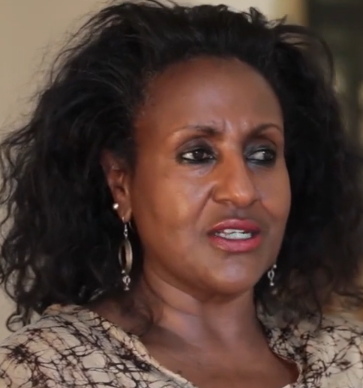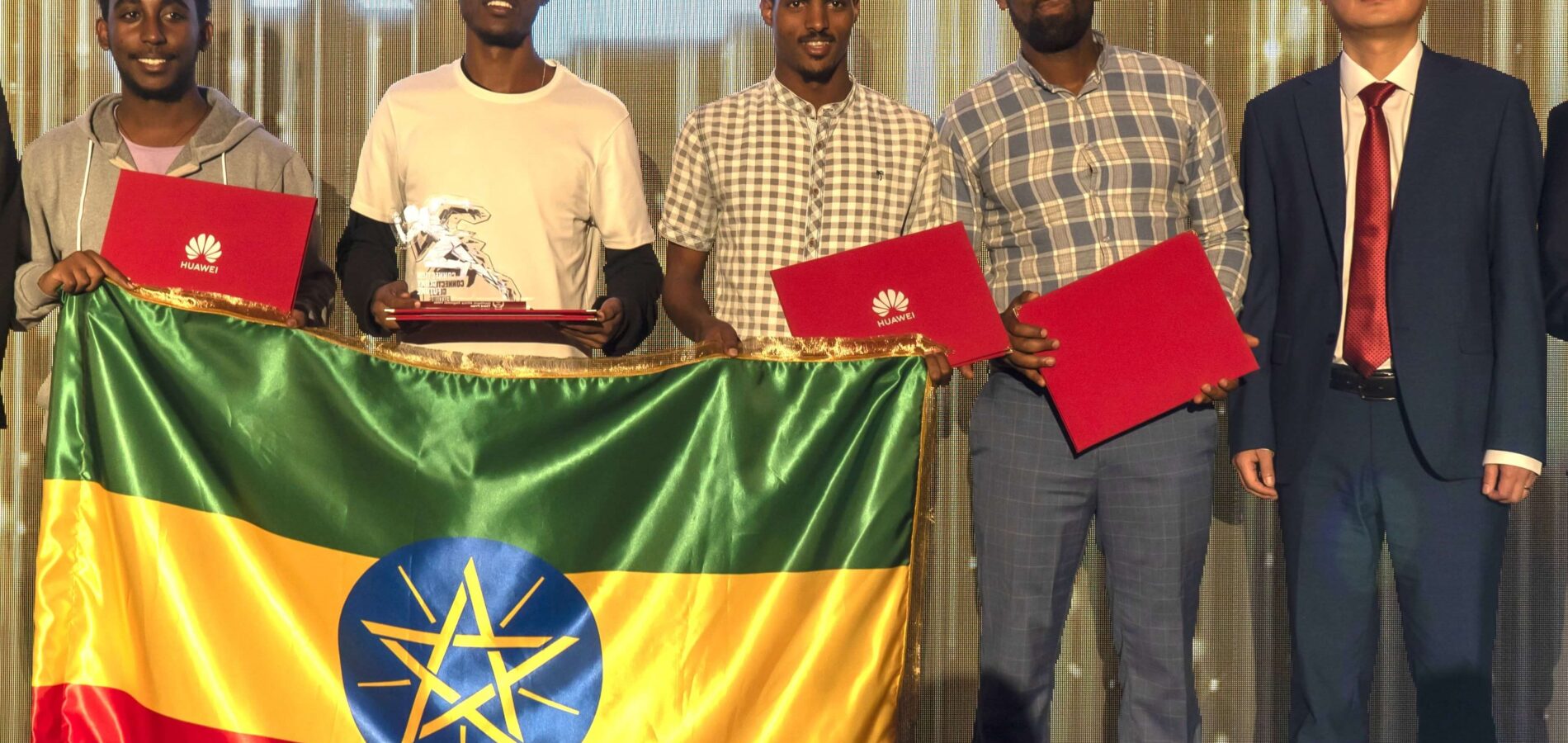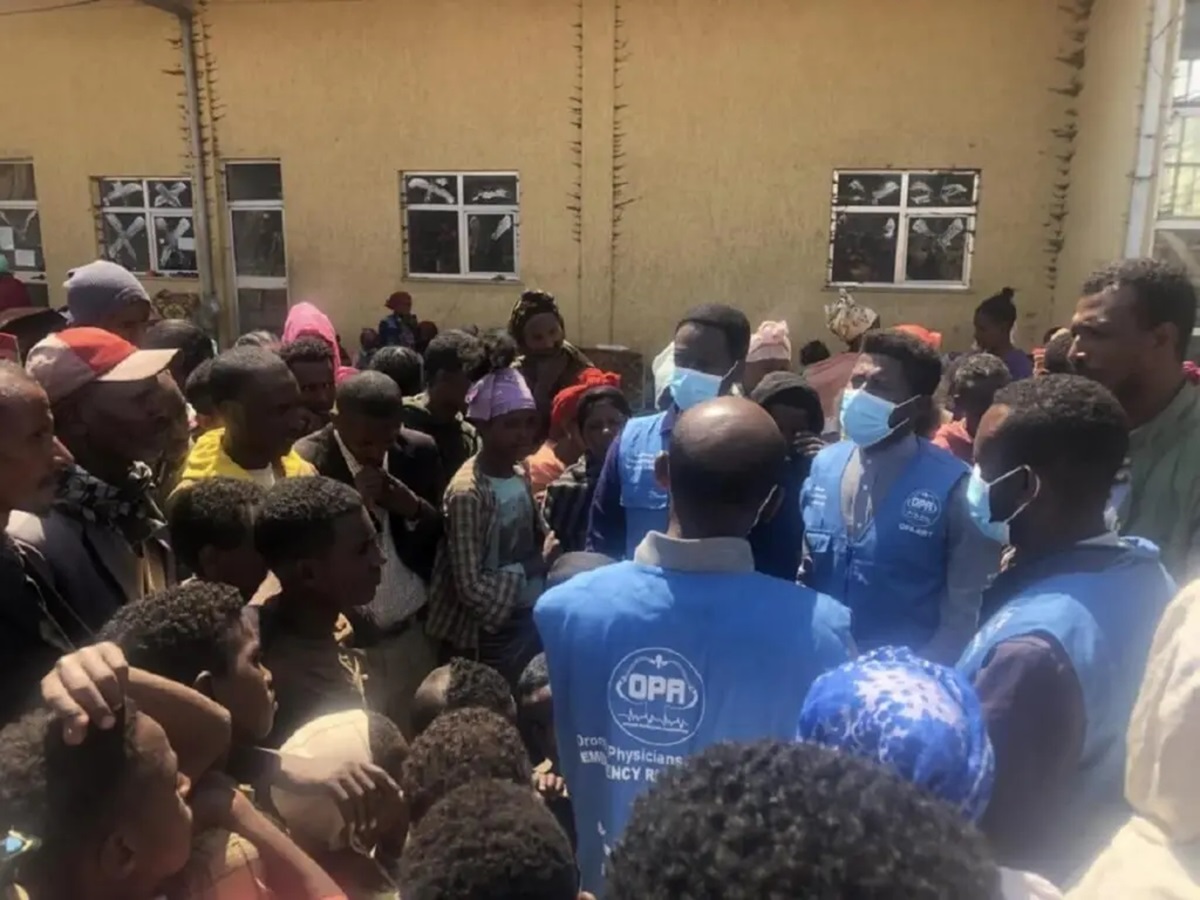Viewpoint: Race and race matters: A personal reflection

By Elizabeth W. Giorgis (PhD)
Addis Abeba, June 04/2020 – As I was writing this, I was watching the news from America where I had lived for most of my adult life.
America was home; 4 years of college in Baltimore Maryland, 14 years in Oakland California and ten years in New York city. And please don’t calculate my age!! I received my undergraduate degree from a historically black college called Morgan State University where I was introduced to African American culture. Morgan shaped and formed not only my sensibilities to race and racial injustice but it also intimated me to the rich souls of black folk that W.E.B DuBois eloquently portrays in his book “Souls of Black Folk.” I was acclimated to forms of incredible esthetic in which the complexities of black life; its history of oppression and its history of inequality is revealed. Certainly, it is sad truth that black esthetic bears witness to how African Americans have searched for an identity in an America that first enslaved them as property, and once that was over, continues to dispose their human dignity.
And it is within this web of human tragedy that black esthetic historically emerged; through hopes, dreams and aspirations, and along with all these veracities, a multitude of enticing possibilities. In music it is jazz, blues, rhythm and blues, gospel, funk and soul; Aretha Franklin and Parliament, Earth Wind and Fire and Sonny Rollins, Charlie Parker and Mahalia Jackson, Billie Holliday and Nina Simone, to name a few. Rap and hip hop which is a genre that first appeared as a form of dissent came after my student years at Morgan although I continued to indulge in such music in my subsequent life. In literature, it is the writings of, among many, James Baldwin, Toni Morrison and Richard Wright and in poetry it is the remarkable poems of Maya Angelou, Amiri Baraka, Sonya Sanchez and Langston Hughes, and in the visual arts it is the paintings of extraordinary artists like Romare Bearden, Jacob Lawrence and Paul Dunbar. I learnt about the paintings, music, literature and poetries of black people at Morgan. And indeed, with all its intensity.
I rented rooms nearby campus and lived with African American women who treated me like their own daughter and who touched and disarmed me. There was Ruby whose husband came home on weekend furloughs from the nearby prison. She was a civil rights activist in the 1960s, and through her, I fantasized about the civil rights movement and the incredible activists within the movement; Huey Newton, Eldridge Cleaver and all the other Panthers who exposed the injustices of racism, and furthermore, the great lies of the so-called American dream. Though I was distressed to see Cleaver carrying the American flag in Oakland in the 1990s —he had joined the Republican party in his later life—- I could never forget the discussion around his book “Soul on Ice” in Professor Al Thornton’s Political Science class at Morgan State University. Professor Alvin Thornton is currently a well-respected African American political expert and analyst. And then there was Mrs. Coleman who indulged me with endearing affection and whose face marked the misgivings of black American life. To her, I was this strong African girl but also a girl with so much vulnerability. And so, she provided care she thought I needed and through this tragic love, she sincerely replaced a mother who I had left behind. Often, these women indulged me with their cuisine; chittlings, okra, hammock and collard green, barbecued ribs—Oh! those ribs!!—-food that was inexperienced to my young Ethiopian palate but cuisine that was nevertheless exquisite and extraordinary. They queried about my home country and expressed their pride in how Ethiopia symbolized racial redemption and pride. Put simply, my student life at Morgan taught me the invaluable meaning and humanity of blackness that is particular to African American lives but that also resonated in global black consciousness which I continued to passionately express.
Those years at Morgan State and beyond have also troubled me. I was perplexed when some of my Ethiopian friends absolutely and categorically dismissed the issues that circumscribed blackness and its racist imaginings that was so intimate to me. How could this be? Their apathy completely amazed me. What do we have in common, they would ask me, as if the color of the skin and its—- to use James Baldwin’s phrase from his tantalizing essay “The Fire Next Time”—– “unutterably painful relation to the white world” was simply not enough to measure one notion of commonality. Here I would like to clarify that when I say my Ethiopian friends, I am only talking about the people who surrounded me. That there were few other Ethiopians who identified with the cause of the African American as they assimilated into the Unites States is evident from individuals’ writings as well as from official archival documents. For instance, Teshome Habte Gabriel, the great theorist of cinema who taught at the University of California (UCLA) and who passed away in 2010, did not only theorize about African American marginality, but he was also responsible in introducing the theory of “Third Cinema” which became an important document to understand and theorize non-western marginality. There is also Andreas Eshete who participated in the American civil rights movement in various capacities, as a student at Williams and Yale, and particularly in advocacy work that pertained to voters’ registration. Although we, my friends and myself, did not encounter similar experiences, such as my involvement with the ‘black human’ of Morgan State University, we were, nonetheless, all categorized as ‘black’ in the American racial hierarchy. And yet it was paradoxical to me that my Ethiopian friends distanced themselves from the experiences of black Americans and were uneasy to participate in their cause.
Despite being categorized as black in the American racial hierarchy, my Ethiopian friends considered a standard of blackness that aimed to transcend African American blackness, curiously misleading their own exploitation in the American racial category
Now, I don’t want to theorize why this occurred by using the theories of Foucault or Derrida or Benjamin as I routinely do in my academic work. That my observation is enough by itself is a crucial certainty. So often we academics think writing exclusively about our own experience will not be sufficient unless we depend on one theory or another that we think can prove our erudition even when it is not necessary. Theory is simply experience and that is what I am trying to convey. Today’s unrest in America that rose in the middle of a dangerous pandemic, does not require a precise theory to understand its meaning, cause, validation or account. It is after all a massive voice against inhumanity that even a pandemic could not silence. For black Americans, it has become extremely exigent to voice their dissent and this voice does not need the theories of Foucault or Derrida to prove its urgency and its materiality. The only theory we should perhaps understand through this massive unrest is that class relationships and capitalism are inseparable from racial oppression.
Let me go back to my story. Despite being categorized as black in the American racial hierarchy, my Ethiopian friends considered a standard of blackness that aimed to transcend African American blackness, curiously misleading their own exploitation in the American racial category. They saw African Americans as criminals and “thugs,” the very same stereotypical imaginary that Donald Trump uttered in recent days. And yet, Ethiopians were able to migrate to the US because of the very struggle of African Americans who fought for over 400 years for a simple and basic rights of humanity. It is impossible to think otherwise. My friends pitied African Americans. Yet again, my friends came to America escaping a country that had excluded them from the same virtues of human rights and dignity. They fled from a brutal military regime during my years at Morgan State. And they fled the other regimes that followed fearing persecution and indignity. And yet the barrier they imposed between their own perception of blackness and that of the African American type utterly disturbed me.
By the mid 1990s I had become a corporate professional in the United States, a banker first in Oakland and San Francisco and later in New York. Oakland was home for the Black Panther Party (BPP). Bobby Seale (Chairman) and Huey Newton (Minister of Defense) founded the BPP in 1966 in Oakland. I worked in Oakland’s Fruitvale Ave in the early 1990s, the very center of the Bay Area’s African American community. Having not gone back to Oakland for some time, I was dismayed to see the gentrified neighborhood of Fruitvale Ave. when I went back to visit three years ago. Lots of young white professionals had moved in to Oakland fleeing the housing cost of San Francisco. Health food stores which served odd and extravagant greens like arugulas, a type of green that most black people were not familiar with, and exotic tastes of coffee such as frapuccinos, iced lattes and cappuccinos have replaced the pancake and waffle houses, the rib and soul food restaurants, the black hair salons and the beauty supply stores that sold human hair and other black beauty products. Black people who lived in the area were pushed many miles away to Antioch in Contra Costa County.
It was a similar situation in Harlem New York where as the saying goes we used to ‘hang out.’ The echo of music, the kids who were running on the streets of Harlem and the other outdoor activities that surrounded the communal ethos of black lives were no longer to be found. Harlem is gentrified and a sanitized population of whiteness have suddenly emerged. The dilapidated brownstones that were once home for many animated African American lives are today renovated in lifeless multi-million dollars construction projects. I was particularly upset when a clothing store that I used to frequent on 125th street was no longer there. And when I called Greta, the owner, to see what had happened, she told me, “banana republic and gap honey,” meaning she was forced to move out of Harlem because the new white settlers were not interested in her type of design since they only wore plain clothes such as what Banana republic and Gap produced, rather than the extravagant fashion she designed and that black people liked. And then there was Showman, the jazz joint in Harlem Morning Side Drive that I used to frequent on weekends. Instead of the rhythmic and jumping place it used to be, it was filled with white people who looked like they were attending opera recitals rather than a jazz performance. Perhaps it is also because of all these decentering displacements from major American cities that were once populated by black people that black folks are today angrily speaking back.
Let me say a few things about American corporate life. Though the injustices around gender and race had always been real to me, it was nowhere more pronounced than in the pinnacles of corporate America that I was so proud to enter initially. I had finally been chosen to taste the bounties of the American dream. A black woman, and furthermore, an immigrant black woman in corporate America sounded fantastic to the arguments and declarations of the American dream. Little did I know that I would later be severely challenged with the gendered and raced aspect of American corporate life. I had to not only doubly prove my worth to my corporate bosses, but through that exercise, I was also forced to repeatedly reexamine my significance as a human being. What a psychotic life corporate America imbued!! A utilitarian culture that only rewarded white masculine subjectivities and many times young white masculinities. I still have the various grievance letters I wrote to my bosses about the unfair treatment given to me when compared to white masculine staff. It was when I wrote these grievance letters that I hoped, one day, I will return to my country where I imagined race would not be an issue of concern even if gender was. How wrong I was!! With all its other gratifying discoveries and actions, return brought back something more about the story of blackness, a level of reality that was hard to apprehend. The first thing I realized after coming back was the problematic setting of racial consciousness among my colleagues. To many of my colleagues, my repeated intervention on race and racial consciousness became what they called a ‘diasporic’ obsession.
There were many incidents round race and racial consciousness when I found myself in a position of bewilderment. There was, for instance, an episode that really perplexed me. I was accused of manipulating the museum space I directed which is the Gebre Kristos Desta Center. A complaint was filed by an artist and curator to the German Embassy and the German cultural institute instead of apprehending my Ethiopian superiors. I was flabbergasted!! Since the museum space was close to the German cultural center, both artist and curator perhaps thought I should be reprimanded by the proximity of whiteness. How can the artist and curator deny the conditions of hierarchy, racial or otherwise? Today I look back and ask how could this be? That most of us certainly live without comprehending the larger history of oppression, its genesis and evolution, and its role in creating the divide between the privilege of whiteness and its black antithesis really disturbed me. And it was with great pain, a pain that I still deeply feel, that I wrestled this incoherently silenced episode of my return. I complained about this event but no one seemed to understand my moan. A ‘diasporic’ obsession? I believe not. It is just one of those things that we have not reckoned yet and an issue I argue should urgently be addressed if we are to fight for the justice of our humanity. While this is one incident out of many that I have encountered through my return, my teaching experience at Addis Ababa University also proves the lack of race and racial awareness, as if by some divine intervention, we Ethiopians have escaped the appalling practices of global racial hierarchy. This means, examining the ways in which knowledge about race, racial theories and ultimately inequality has historically lacked the intellectual rigor that is urgent and necessary, and in many instances, are completely absent from academic inquiry.
On the other hand, the moral apathy that conjures race as an anomaly among students I teach makes great effort to understand ethnic problems in our country. But this problem simply cannot be understood without deeply examining the authority and conscience of empire. Is it not the same empire of the United States that has economically, and by default, racially dominated the Global South of which Ethiopia is one part? And is it not the same empire of the United States that exploits black labor both at home and abroad? Cumulatively speaking, then, it is the same empire that has disturbingly constructed our contemporary sense and history of ‘freedom’ and ‘humanity’ ——-which has also circumscribed our understanding of ethnic identity—– and which has underwritten the contemporary loss and misconceptions of our own identity; where we stand in the global capitalist hierarchy and what it means to be Ethiopian in the terrifying trajectories of inequality that capitalism has produced globally. If we had known that class relationships and capitalism are inseparable from racial oppression, our prime minister would not have spoken publicly about the differences between Jews and African Americans; that Jews worked hard to get to where they are today while African Americans continued to live the way they live.’ What a reckless statement from a black African leader!!!
Today I bring this essay to you not only to recount the struggle of African Americans but to also reckon our obscure condition and positionality on race and race matters which I think is a sort of estrangement from our own wretchedness. I bring this essay to you to share my own experiences of race and race matters in America, and by doing so, to document, construct and reconstruct race and racial matters in different ways; seen through one racialized immigrant subject in America and what her hopes of return had brought forth in the empathy of race and racial matters. I bring this essay to you to mark the intellectual dishonesty that we have accepted for so long, a baggage that I think we need to unpack particularly in light of what is happening in America at the present. I bring this essay to you to convey that the rage that has engulfed America today is a rage that should also profoundly affect our type of humanity since the true reason for this rage is the terrifying trajectories of inequality that capitalism has produced globally. AS
_______________________________________//__________________________________

Editor’s Note: Elizabeth W. Giorgis (PhD) is Associate Professor of Theory and Criticism at the College of Performing and Visual Art and the Center of African Studies at Addis Abeba University. Her book “Modernist Art in Ethiopia” that was released in February 2019 and that was published by Ohio University Press was recently shortlisted for the African Studies Association UK Fage and Oliver Prize for original and outstanding scholarship on Africa. She can be reached at ewg8@cornell.edu







